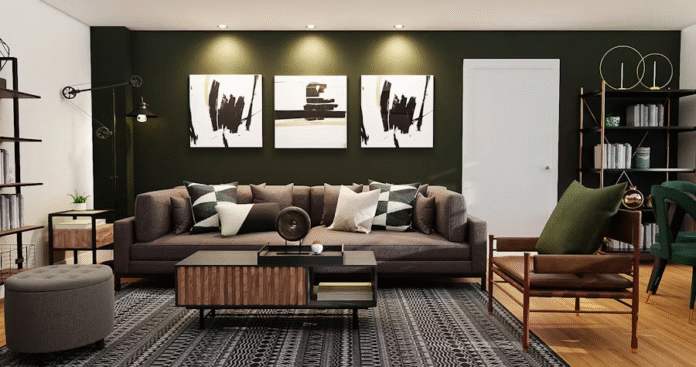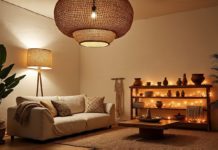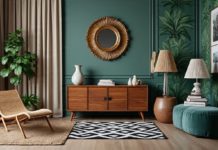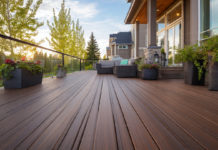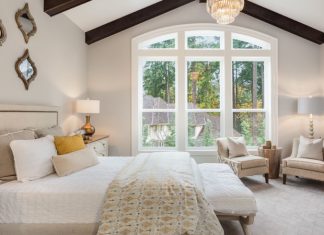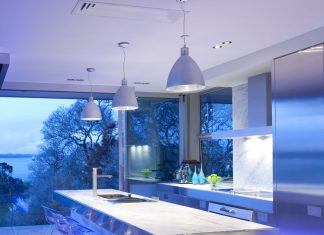Whole-house customization has shifted from a luxury option to a practical strategy for homeowners and interior designers who want spaces that feel personal, efficient, and future-ready. As lifestyles evolve and technology reshapes the way we live, the demand for cohesive and fully customized interiors has grown fast. Today’s clients want homes that reflect their daily routines, tastes, and long-term goals. That shift has pushed the design industry to rethink what matters most.
Below are the top trends shaping whole-house customization in 2026, along with the outdated practices that are losing ground. Whether you are a homeowner planning a remodel or an interior designer steering clients toward smarter choices, these insights will help you stay ahead.
What’s In
1. Fully Integrated Storage Systems
Storage is no longer an afterthought. Modern whole-house customization prioritizes built-in solutions that blend into the architecture. Designers are focusing on wall-to-wall cabinetry, hidden compartments, and multi-zone wardrobes that follow the natural flow of each room.
Custom manufacturers like OPPOLIA Home have helped push this trend forward with modular systems that fit tight floor plans, open layouts, and multifunctional rooms. Homeowners want clean visual lines and clutter-free surfaces, and integrated storage delivers exactly that.
2. Mixed Material Palettes
Monotone interiors are fading. In their place, balanced combinations of wood, stone, metal, and glass are rising. The goal is to create spaces that feel warm and grounded without becoming visually heavy. Walnut paired with brushed metal or stone tops set over matte lacquer cabinets, are common choice.
Mixed materials also allow designers to create depth without relying on intense colors. The result is a refined, layered look that aligns with today’s upscale residential design.
3. Smart Room Zoning
Open concept layouts remain popular, but homeowners want better control over how each zone functions. Instead of one big multipurpose space, designers are using custom partitions, sliding glass dividers, and built-in shelving to define smaller activity areas.
Smart zoning respects open flow while preserving comfort and privacy. It also improves acoustics and lighting, two elements that impact daily living more than most people realize.
4. Personalized Kitchens
The kitchen is the top priority in whole-house customization. What is new is the focus on tailoring every inch to the client’s routines. That includes:
- Appliance garages that hide small equipment
- Custom pantry systems designed for specific food habits
- Islands shaped for entertaining or meal prep
- Tall cabinets that use ceiling height effectively
Neutral color schemes remain strong, but warm earth tones and two-tone combinations are gaining traction. Clients want kitchens that look timeless but feel inviting.
5. Sustainable Materials
Environmental awareness is no longer a trend. It is a standard expectation. Designers are choosing responsibly sourced woods, low VOC finishes, energy-saving lighting, and durable long long-lasting materials that reduce waste.
Large manufacturers have also stepped up. Many companies now offer eco-certified cabinetry, recycled aluminum windows, and water-saving bathroom solutions. For clients, sustainability now signals quality rather than compromise.
6. Soft Minimalism
Minimalism is still in, but it has softened. Instead of stark spaces with sharp edges, homeowners are opting for rounded profiles, textured surfaces, and warm neutrals.
Cabinets with curved corners, ribbed panels, and integrated handles are now common in custom builds. This creates a relaxed atmosphere that feels polished but not cold.
7. Multi-Function Furniture
In growing cities, square footage comes at a premium. Custom furniture that adapts to multiple uses is becoming a must-have. Think wall-mounted desks that fold away, beds with built-in drawers, or banquettes with hidden storage.
This trend works well in family homes, studio apartments, and hybrid live-work spaces.
What’s Out
1. Cookie Cutter Cabinetry
Standard prefabricated cabinets do not satisfy modern homeowners who want tailored solutions. The one-size-fits-all approach limits layout flexibility and wastes storage potential.
Whole-house customization is replacing these pieces with systems that match the exact dimensions and lifestyle needs of the client. Designers know that a custom fit performs better long term.
2. Overly Industrial Interiors
Industrial style once dominated modern homes. Today, it feels harsh and impersonal. Heavy black frames, exposed ductwork, and raw concrete are being swapped for warmer, softer finishes.
Designers are moving toward natural textures and muted tones that age gracefully. Industrial accents are still used sparingly, but the aesthetic is no longer the main focus.
3. Trend Based Color Choices
Bold, trendy colors create short lived excitement but tire quickly. Homeowners are now choosing versatile palettes that can adapt over time. Accent walls are declining. Instead, people prefer consistent tones throughout the home to support a calm environment.
The push for functional color strategies aligns with the lasting mindset behind whole-house customization.
4. Crowded Rooms
Over furnishing is a common design mistake that creates stress and visual noise. The new approach is editing down. Designers are choosing fewer, better pieces that leave room to breathe.
This applies to all zones. Bedrooms focus on comfort, living rooms emphasize flow, and kitchens prioritize efficiency.
5. Isolated Design Elements
Homes where each room feels unrelated are becoming outdated. Modern homeowners want harmony from the kitchen to the bathroom to the wardrobe systems. Whole-house customization prioritizes continuity in tone, material, and layout logic.
This creates a unified experience and elevates the entire home.
Conclusion
Whole-house customization is no longer reserved for high-end builds. It has become the smartest way to create functional, beautiful, and future ready spaces. As trends continue to shift toward personalization, integrated storage, sustainable materials, and cohesive design, the homes of tomorrow will look cleaner, work better, and feel more connected.
OPPOLIA is a well-known furnishing manufacturer in China. They provide whole-house solutions, including custom cabinets, wardrobes, bathroom vanities, furniture, aluminium windows and doors, and more. If you are a contractor looking for a reliable project partner, OPPOLIA is the best choice. Contact them for a free quote!
